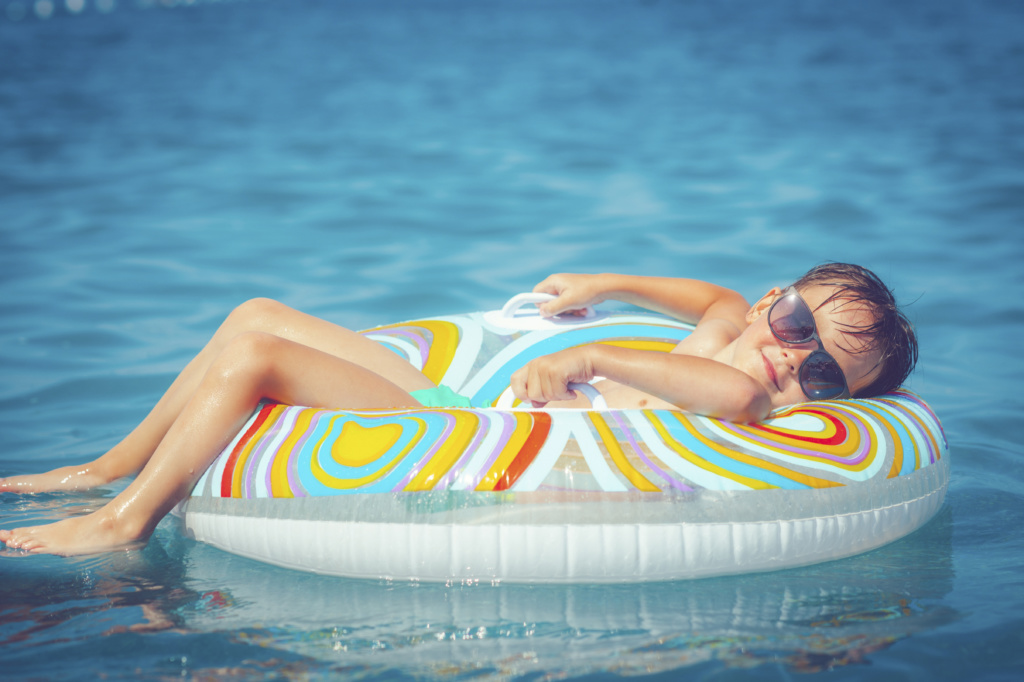Skin Safety
Article by | Emily Stewart, MD | Dermatology, Baylor Scott & White – College Station
 The summer months – with them come longer days, hours spent lounging by the pool, and working outside and in the garden. This is the most high-risk time of the year for skin damage. According to the American Academy of Dermatology, one in five Americans will develop skin cancer. It’s the most common cancer in the U.S.
The summer months – with them come longer days, hours spent lounging by the pool, and working outside and in the garden. This is the most high-risk time of the year for skin damage. According to the American Academy of Dermatology, one in five Americans will develop skin cancer. It’s the most common cancer in the U.S.
Melanoma is the deadliest form of skin cancer. It often starts as a dark spot on the skin. It can spread to other parts of the body, including lymph nodes and internal organs. Early detection and treatment are essential.
This year, it is projected that invasive melanoma will be the fifth most common cancer for men (57,220 cases) and women (39,260 cases), according to the American Academy of Dermatology. In 2019, it is estimated melanoma will cause 7,230 deaths.
The most important way to protect your skin is avoiding the sun. Think about the time of day you are outside. If possible, try to avoid the 10 a.m.-2 p.m. window. If planning on working in the garden, maybe take advantage of the cooler temperatures in the morning or evening. And if you are planning a trip to the pool, maybe think about taking a break around the lunchtime hours to sit under an umbrella or go home for lunch.
Use other articles to help shield your skin from the sun. Wide-brim hats are great for giving your face and ears full coverage. If you are balding, it’s especially important you protect your scalp by wearing a hat. Sunglasses are recommended for protecting your eyes. There are even lightweight and breathable UV-protective clothes. Rash guards and other swimsuits that cover larger areas of skin offer UV protection for kids and adults.
If you are going to be outside, be sure to put on sunscreen of SPF 30 or higher. Look for one labeled broad spectrum (includes UVA and UVB protection). If you are swimming or sweating significantly, look for one that is water resistant.
 If you plan to wear a swimsuit, use at least one ounce of sunscreen for protection, which is the same size as a shot glass. If you are swimming, the longest you are protected in the water with sunscreen is 80 minutes.
If you plan to wear a swimsuit, use at least one ounce of sunscreen for protection, which is the same size as a shot glass. If you are swimming, the longest you are protected in the water with sunscreen is 80 minutes.
A young child or baby needs strict sun protection. Sunscreen should be avoided in infants younger than 6 months. The best way to protect infants is to keep them in the shade as much as possible, and dress them in lightweight, long-sleeved clothes, pants and hats. For babies older than 6 months, the same rules apply. Sunscreens that use zinc oxide or titanium dioxide, often labeled “for babies,” may be less irritating to their skin. Cumulative sun exposure can lead to skin cancer development later in life, so it’s important to start your kids on the right path early.
Keep in mind, the summer is not the only time you are at risk. The sun emits UV rays year-round, and UV rays can penetrate the skin even on a cloudy day (80 percent of the UV rays can pass through the clouds).
Check yourself regularly for signs of premature aging and skin damage, including wrinkles, age spots (also called lentigines) on the face, chest, backs of the hands, and tops of the feet. If you have areas of concern, see a board-certified dermatologist.